Bulk-generate & schedule posts in seconds with Smart Scheduling. Try now!
A comprehensive guide to create engaging content in 2025

Have you ever thought about creating engaging content that outsmarts your previous content?
If you produce content and desperately look at the analytics to find a glimpse of improvement, then you need to stop right away.
Yes. Please, stop.
There can multiple goals behind content publishing, but it becomes a whole lot better if you know why you’re publishing the content and what you’re saying in it.
A brand does content marketing for many reasons. It could be for building an identity, increasing engagement, driving new traffic, building the relationship, or converting visitors into paying customers. We’re going to talk about driving more traffic right off the bat.
Before looking any further let’s talk some basics and learn what kind of content engages your average audience.
Top 6 types of content that engages the audience
1. Case Studies
A case study is a type of original research that delivers detailed information about a brand’s triumphs and failures. You may provide step-by-step statistics or troubles faced before making it somewhere. The information in a case study can be regarding how you achieved certain improvements over time.
Some case studies by ContentStudio:
2. Infographics
Infographics provide a visual representation of information or data. This method of delivering content is consistently more shared and viewed than most other sorts of content. They are capable of communicating any thought or idea, research, statistics in an easy-to-understand manner.
3. Memes
Meme marketing is the new trend in content marketing. Be it trending Twitter meme formats or squid game graphics, meme marketing is one of the most effective ways to drive engagement towards your blog or website.
Examples of meme content:
4. Book Reviews
Book reviews help you establish yourself as a thought leader. Simply craft your post around a book and give your opinion on it. Recommend good ones and criticize the ones that aren’t so good.
Example of book review posts:
5. Videos
An excellent video effectively conveys your message in a short and memorable manner. It’s not only about the moving image; it’s also about the words you say or display. You can make an office tour video, a music video, a how-to video, or anything else that comes to mind as educational and interesting to your audience.
Video content example:
6. Quick Guides
Any document that provides a one- or two-page set of condensed work instructions on using a product is referred to as a quick-start guide. It serves as a source of general orientation about a subject.
Examples of blog posts serving as quick guides:
A winning strategy to create engaging content in 2025
If you’re interested in knowing some of the top-notch strategies of writing content that could make your blog upside down, then hang tight, because you’re about to read some content creation tactics that would lead to more readers and eyeballs around.
Does it sound interesting?
Let’s roll.
1. Use content Insights
How to use content insights? The statistics aren’t just about visualization.
-
-
- How many unique visitors came yesterday
- How long they have stayed over
- And what pages they were landing on.
-
If you become obsessed with the numbers, you won’t be able to see the big picture. It’s good to keep track but just staring at them all day long is a waste of time.
Instead, you could do something similar for the better. Go to your Google Analytics, check out which articles are doing better than the rest of them.

In fact, you could also go deeper into your Google Search Console and look at the following things:
-
-
- Countries they are coming from
- Pages they are landing on
- Keywords they are using
- Position of your post/page in the search
-
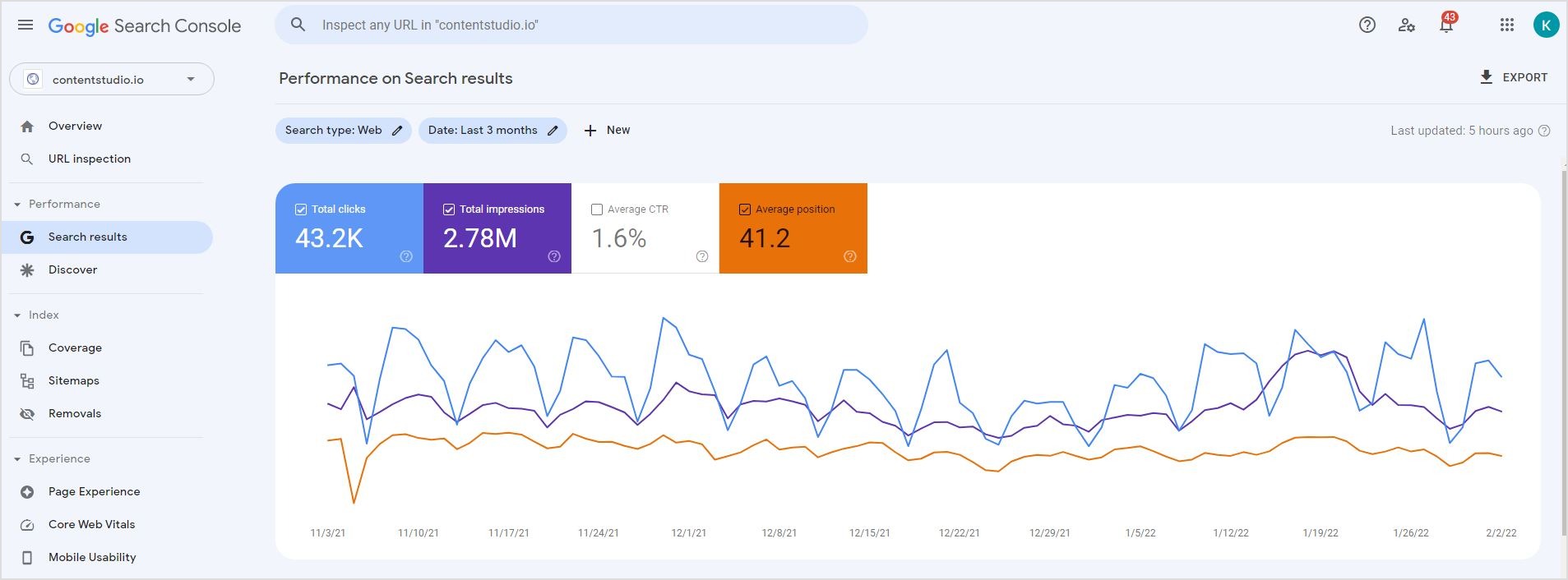
No matter what kind of traffic stats tool you’re using, these are pretty much the standards things that you may want to look at in any website traffic and analytics tool.
For example, Extreme Tracking does well in this regard. It shows a lot of data about your visitors, which could be vital in understanding the audience and creating content in the future.
![]()
All such data tells you that what has been working on your blog. It gives you a signal to follow the trail and go into the rabbit hole to make sure that you get the most out of it.
Suppose, an article got ranked on the first page of Google. It becomes the most popular page of your blog. All you need is to analyze the following things in the very same blog post:
-
-
-
- Topic of your blog post
- Category of the blog post
- Keywords targeted
- Length of the blog post
- Inbound and Outbound links
- Number of images used
-
-
The list goes on, but what matters the most is what topic worked for you.
It shows that you could become an authority in that specific sub-niche. It just signals your chance to become an authority in that specific area.
If you write more blog posts on related topics and link to your new blog posts from the ranked blog post, the chances are, it would somehow impact the new ones as well. There is no guarantee that it would happen but you must try out.
2. Discover trends
To write content that drives visitors and engagement, you can’t only rely on a guess. Instead, go find what others are looking at, talking about, and discussing on the web.
Conducting a content audit can also help you evaluate your existing material, ensuring it aligns with audience needs and trends. Tools like Twitter Search and ContentStudio can further assist in discovering trending topics and refining your approach.
To find that out, you could use various options:
a. Use Google trends. Enough said.
b. Twitter Search, for example, is still a place to find relevant discussions and meet people with similar interests.
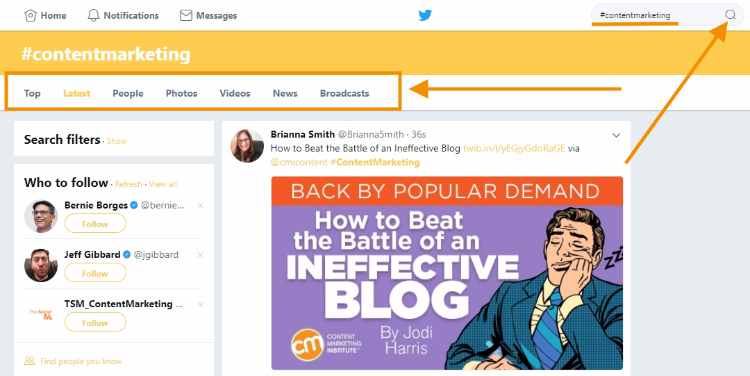
Not only will you meet new people in the same industry, but you would also get to know what’s being discussed out there.
c. ContentStudio is a platform that does an incredible job when it comes to discovering engaging and trending topics. It’s an all-in-one social media management and content discovery tool for entrepreneurs, bloggers, and businesses.
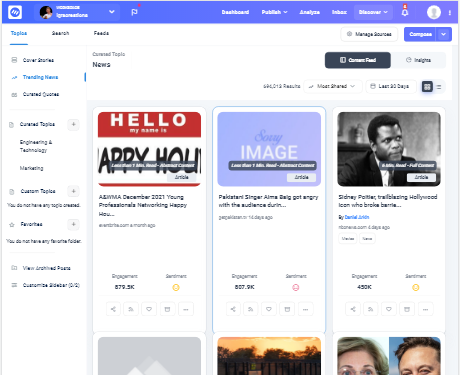
Moreover, it finds the relevant and trending content on the web and social networks. It also allows the users to change the preferences through custom topics in order to monitor for content that they actually want to see.
You can search by following parameters in the Content Discovery section:
-
-
-
- Keywords
- Phrases
- Domains
- Authors
-
-
d. Google Alerts is another way to keep an eye on the industry news and updates. This service allows you to set up alerts based on your keywords. It sends an email when content related to the topic publishes online.
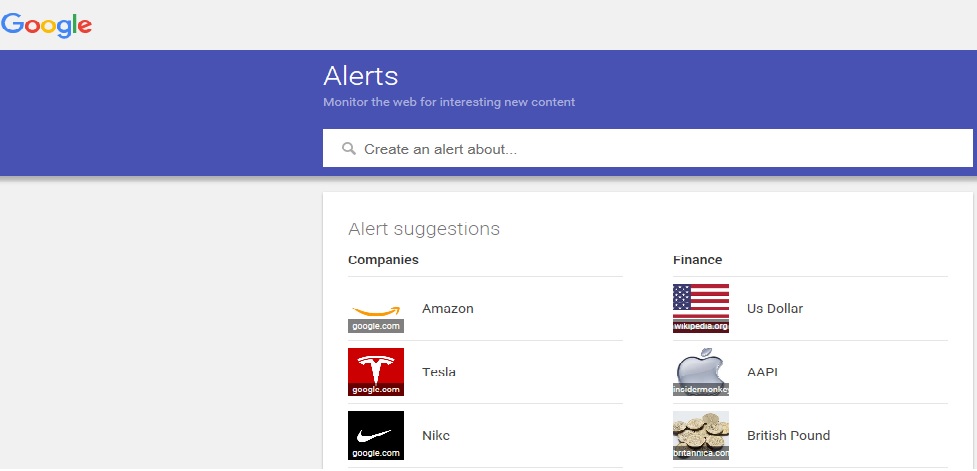
It doesn’t mean that you always have to rely on the triggers that come from these sources. These platforms give you a snippet of what’s going on.
The next part depends on you that what you pick up from these social trends and write about it. If you have a solution to a problem and your content solves the problem, the chances are, your blog post could get traction.
However, not all blog posts get the same amount of attention and exposure.
You must know your brand’s strength and buyer persona. If you know all that, you can leverage these discovery tools at some point.
3. Analyze Competitors
If you’re creative, the opportunities are limitless. The competition on the web is a reality and every blog or website encounters this at some point. Normally, the competitors are those sites that rank among your page/post in search engines and the organic traffic could go either way.
To start figuring out what’s going on with your blog or site’s competition, you must know where to look at.
You can use the tools such as SEMrush and Ahrefs to figure out your blog’s statistics. These premium tools offer deep analysis such as keeping an eye on the competition as well as reporting on your blog’s organic health. These tools will monitor your sites and your competitor sites and report you of what’s going on in SERP.
The simplest way to look at the competitors’ stuff is that take the keywords your blog posts are ranking for; you can take it either from SEMrush, Search Console, or any other tool that monitors your SEO, and then google it.
For example, we took this keyword:
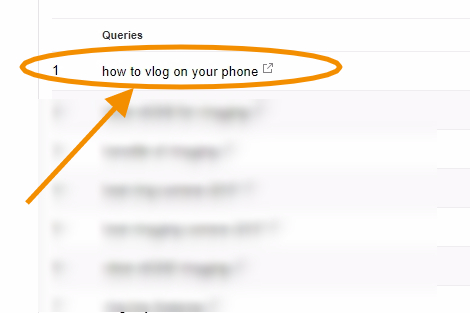
Then, search it on Google. Here are the results:

All the results that are showing up along with your site are your competitors. But in order to use this simple method of taking a look at the competitors, one must know the exact keyword.
Once you’ve figured out the competitors and developed the strategy to create better content than your competitors, then you need to put your effort and sweat into the following things:
-
-
-
- Choose the topics your competitors aren’t targeting
- Write in-depth blog posts
- Publish content on a regular basis
- Check out all the results of the first page in Google (against your keyword)
- Come up with detailed and better content than the first page sites
- Use generic keywords in the blog post titles that people always use in search
- Find content gaps in your market. Try to figure out what your competitors aren’t doing yet.
-
-
At the end of the day even if you play your cards right, there is no guarantee that your blog post would rank on the first page in Google.
On the flip side, sometimes, a blog post that you randomly publish gets more exposure than you were expecting. Most of the time, you only find out once it plays out. Writing content, however, exposes you to the opportunities that could come your way. For instance, the blog post could go viral.
4. Get audience feedback
There is no better way to find someone’s problem than asking them directly what their problem is. Once you know the pain point, you can do whatever possible to provide a solution. When it comes to blogging and content creation, one of the essentials of creating content is that the content must be helping someone out and solving someone’s problem.
The chances are, if your content solves someone’s problem, it would help out more people along the way.
For instance, Ryan Biddulph is a blogger who travels around the world and manages to run a successful blog. Once he tweeted about the guest post:

Darren Rowse does a similar thing. He is the founder of a couple of successful blogs. He is considered one of the pioneers of the blogosphere. He created a thread introducing a specific hashtag to ask questions in the group.
Take a look at his Facebook group’s post:
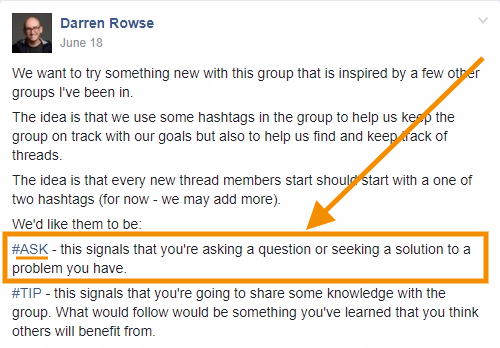
Not only will it help Darren to understand the readers’ problems, but it would also strengthen the community.
The point is that you can take a word from your blog subscribers and loyal readers that what they want to read in the near future.
Sometimes, readers request the bloggers to write content on a topic that they want to read. It shows the relationship between bloggers and readers.
Look at this screenshot, for example:

Asking the audience could stop you from going off the hook. You may feel overwhelmed at some point and try to come up with a blog post idea that you think might help your readers, and it turns out, nobody wants to check it out.
So, the reason for asking the audience or keeping an eye on their thoughts is that you could create content that your audience likes to read.
5. Go with the intuition
Sometimes, your gut tells you to write on a topic that seems important to you. There is no issue with it. You can try out something different once in a while.
We publish content to help the readers in the first place. If the blog post doesn’t get traction, it’s fine.
Maybe, the next three won’t get either. And, the next one after those may turn things around for your blog.
The visitors and engagement won’t happen on every piece of content that you’d publish, anyway. The upside of experimenting is that you’d learn things that won’t be possible otherwise.
In the end, blog analytics would teach you a lot. You will see what topics are doing well on your blog and what you could do to elevate those results.
7 Quick tips for creating high-quality content
-
-
- Ensure it is original, fresh and according to user intent
- Try to create actionable content with no word-filling paragraphs
- Add accurate information, cite research sources and include stats
- Tell a story. Try to hit a nerve or two (in a positive way of course)
- Use visuals to grab attention and appear in visual search results
- Use catchy titles, and a well-structured hierarchy of headings
- Mix your content and avoid monotony.
-
What did you learn about creating engaging content?
The purpose of sharing some of the tactics of driving traffic to the blog is that there are multiple ways to attract, engage, and convert the audience. However, the more important part is the process that teaches you everything along the way.
Feel the pulse of the audience to write better content but keep in mind that every strategy doesn’t work out for everyone.
If you start testing out these methods; don’t just stop after 19 blog posts just because not a single of those blog posts got ranked yet.
Always remember that it’s a marathon, not a sprint.
Arthur Ashe said, “Start where you are, use what you have, do what you can.”
Maybe, you should publish two blog posts every week, instead of one.
Maybe, you should spend two hours daily on blogging, instead of one.
Maybe, you should send your first ever guest post pitch now, instead of waiting for the right time.
All these driving traffic and engagement happen when you step forward and do something!
If you’re interested in top social media predictions for 2025. Check out this video!
So, PLEASE START DOING!
If this blog post motivated you to take action, please let me know in the comments below that what exactly you’re going to do with your blog or website now. I’d love to know.
Recommended for you

13 Best Sprout Social alternatives for effective social media management

150+ Black Friday quotes, hashtags, and slogans to boost sales

Why is an integrated marketing campaign beneficial for your brand?


Powerful social media management software
14-day free trial - No credit card required.
